Ketogenic Fats
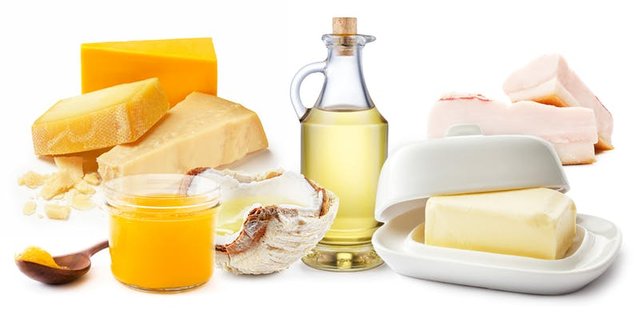
The Ketogenic Diet is characterized by its unique lo-carb high-fat (LCHF) caloric profile: fat should account for at least 60% of your daily calories and carbohydrates for no more than 10%. If your diet has this profile, it is ketogenic, it will get you into ketosis, and it will help to keep you there. But there are extra health benefits to be had if you take the trouble to insure that the fats you are consuming are good fats. Fat is good for you, but not all fats are healthy.
Fatty Acids
Most dietary fats are made of fatty acids: long chains of carbon atoms to which hydrogen atoms are attached by single chemical bonds (aliphatic chains). At one end of the aliphatic chain is a carboxylic acid group (COOH). At the opposite end is a methyl group (CH3). These fatty acids come in three varieties:
- Saturated
- Monounsaturated
- Polyunsaturated
If the carbon atoms in the aliphatic chain are linked to one another exclusively by single bonds, the fatty acid is said to be saturated (SFA). Butyric acid is an example of a saturated fatty acid:

If one and only one of the carbon-carbon bonds is a double bond, the fatty acid is described as monounsaturated (MUFA). Paullinic acid is an example of a monounsaturated fatty acid. It has one double bond in its aliphatic chain between the thirteenth and fourteenth carbon atoms. The carbon atoms are counted from the carboxylic end of the molecule:

Finally, if there are two or more double bonds in the carbon chain, the fatty acid is said to be polyunsaturated. Linoleic acid is a common polyunsaturated fatty acid (PUFA). It has two double bonds in its aliphatic chain: one between the ninth and tenth carbon atoms, and one between the twelfth and thirteenth:
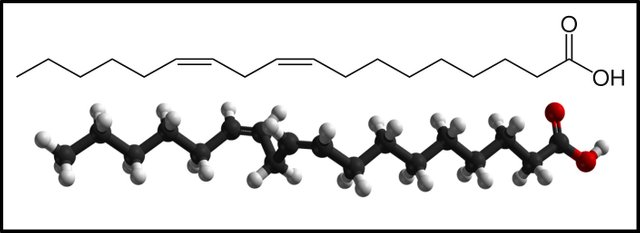
In the Ketogenic Diet, saturated and monounsaturated fats are the healthy choices. Polyunsaturated fats should be consumed more sparingly. This is the complete opposite of what nutritionists have been telling us for decades. Even as I write, the Wikipedia article on polyunsaturated fat repeats the myth that saturated fats are bad fats while polyunsaturated fats are good fats.
Inflammation
The key factor here is inflammation, which is associated with the body’s response to injury, infection or irritation. If part of your body is damaged through one of these causes, your immune system will be activated to protect you from further harm and to repair any damage that has been done. The five cardinal signs of inflammation are heat, pain, redness, swelling, and impaired function (Latin: calor, dolor, rubor, tumor, and functio laesa). As your body heals and normal function is restored, this healthy form of inflammation, known as acute inflammation, subsides. Acute inflammation, then, is a natural part of this healing process. However, inflammation can be harmful to the body if it becomes chronic—ie long-lasting. Chronic inflammation can lead to lead to a variety of ailments, some more serious than others: hay fever, rheumatoid arthritis, atherosclerosis, periodontitis, and even several forms of cancer.
Certain foods are now known to be inflammatory whilst others are anti-inflammatory. The former create inflammation throughout the body, and regular consumption of them will insure that this inflammation becomes chronic. Anti-inflammatory foods, on the other hand, do not cause inflammation: in fact, they can reduce the risk of chronic inflammation and even reverse its effects.
Foods that cause inflammation include refined carbohydrates, sugars, gluten, oils rich in polyunsaturated fats, and heavily processed foods. These are the types of foods that are generally avoided on the Ketogenic Diet. High levels of insulin are also known to be inflammatory.
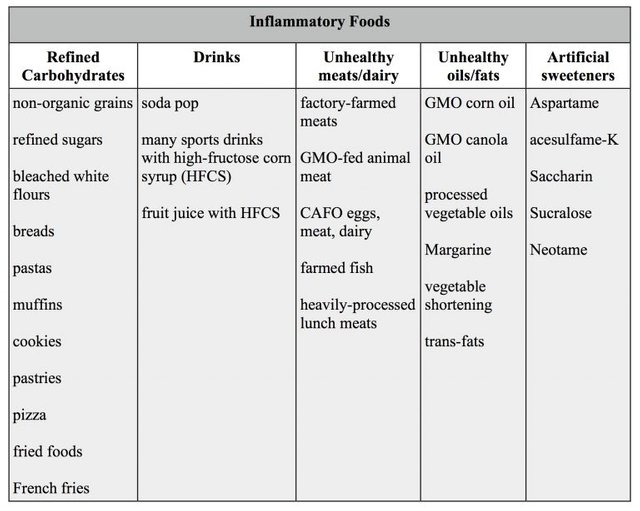
Anti-inflammatory foods include olive oil, coconut oil, ghee, butter, nuts, seeds, fatty fish, and leafy green vegetables. These are all staples of the Ketogenic Diet.
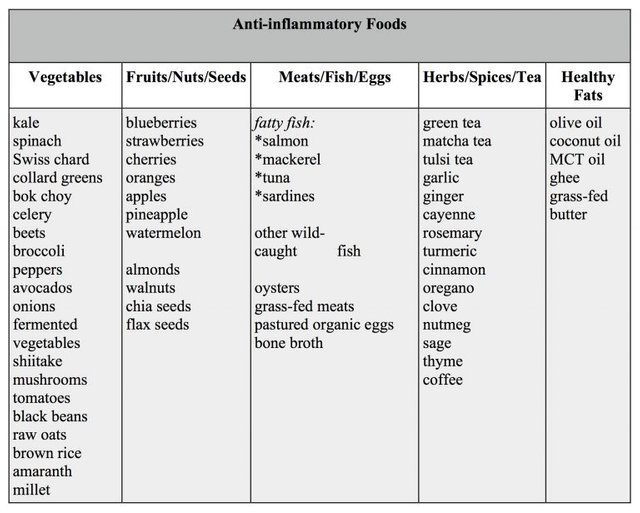
The Ketogenic Diet, then, is an anti-inflammatory diet. This, in fact, is one of its principal benefits. It excludes many of the inflammatory foods, includes many anti-inflammatory foods, and promotes low levels of insulin. Of course, not everything in the Ketogenic Diet is anti-inflammatory: the artificial sweetener sucralose is inflammatory, as are fried foods. And most fatty foods contain some polyunsaturated fats.
Essential Fatty Acids
You cannot eliminate polyunsaturated fats from your diet entirely, as there are two polyunsaturated fatty acids that are essential nutrients: that is, you must ingest them on a regular basis, as your body needs them but cannot manufacture them itself. These essential fatty acids are alpha-linolenic acid and linoleic acid. The former has three double bonds in the carbon chain, while the latter has two. Because the last double bond in alpha-linolenic acid occurs between the third-last and fourth-last carbon atoms, it is classed as an omega-3 fatty acid (ω-3). Linolenic acid is an omega-6 fatty acid (ω-6), as its last double bond occurs between the sixth-last and seventh-last carbon atoms. Omega refers to the last carbon atom in the aliphatic chain—the one in the methyl group. The dash in omega-3 is really a subtraction sign. Thus, omega-3 fatty acids are polyunsaturated fatty acids in which the first double bond occurs between the third and fourth carbon atoms counting from the omega end. In the case of alpha-linolenic acid, there are eighteen carbon atoms in the aliphatic chain. So, omega = 18, and omega-3 = 15. So the first double bond from the omega end is between the fifteenth and sixteenth carbon atoms.
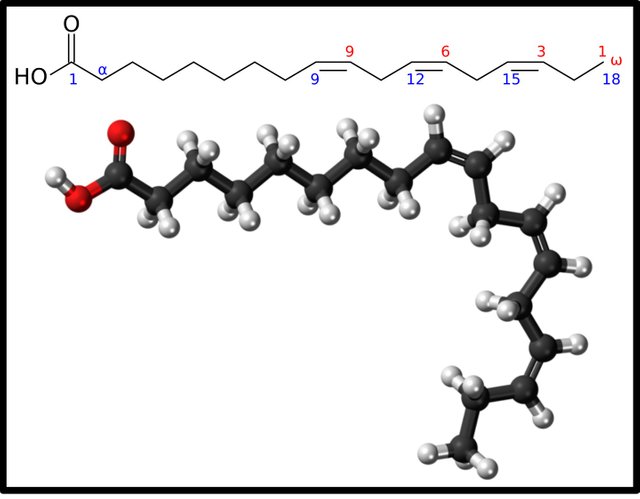
Alpha-linolenic acid and linoleic acid are not the only omega-3 and omega-6 fatty acids that are found in common foodstuffs, but they are the only essential ones. But how much of them do we need?
... the type of fat eaten when most of your energy comes from fat is important ... When fat is used for fuel, the body prefers that the majority of it be provided as mono-unsaturates and saturates. On a low carbohydrate diet appropriately rich in fat, even if only a small proportion of your fat is polyunsaturated, this small fraction times the total amount will still provide enough grams of the essential fatty acids. Because they function like vitamins rather than fuel, for the essential fatty acids, it’s all about dose, not percent. (Volek & Phinney 2011:21-22)
Omega-6 to Omega-3 Ratio
Inflammation is also a factor that must be taken into consideration:
Omega-3 and omega-6 polyunsaturated fatty acids play important roles in inflammation. In general, omega-3s are anti-inflammatory while omega-6s are pro-inflammatory. (Healthline)
Consequently, you should try to ensure that the small amounts of omega-3 and omega-6 fats that you are consuming are being consumed in the correct ratio. Although the body requires both types, omega-6 fatty acids are inflammatory while omega-3 acids are anti-inflammatory. Ideally, therefore, you should be consuming only as much omega-6 as your body absolutely requires, while you can be a bit more flexible when it comes to omega-3. Most sources I have consulted suggest that the ω-6 : ω-3 ratio should not exceed 4:1. Some suggests that a ratio of 1:1 is ideal, while others suggest that a ratio in favour of omega-3, such as 1:4 is ideal.
The following table lists some common keto-friendly fats and oils in terms of their principal fatty acids (grams per 100 g). These figures are approximate only, and amounts will vary from brand to brand. Remember that most fats and oils comprise a mixture of different types of fatty acids, and some of these products may also contains carbohydrates and protein (eg suet, butter and double cream). Note, also, that many of these fats do not have ideal ω-6 : ω-3 ratios. Overindulgence is contraindicated if there is both a poor ω-6 : ω-3 ratio and a high percentage of polyunsaturated fat:
| Fat | SFA | MUFA | PUFA | ω-6 : ω-3 |
|---|---|---|---|---|
| MCT Oil | 93 | 0 | 0 | - |
| Macadamia Oil | 11 | 61 | 0 | - |
| Double Cream | 27 | 11 | 1 | 2 : 1 |
| Coconut Oil | 83 | 6 | 2 | >1800 : 1 |
| Cacao Butter | 60 | 33 | 3 | 28 : 1 |
| Butter | 54 | 21 | 3 | 9 : 1 |
| Suet | 50 | 32 | 3 | 3 : 1 |
| Beef or Mutton Tallow (Grass Fed) | 50 | 42 | 4 | 1 : 1 |
| Ghee | 62 | 29 | 4 | 2 : 1 |
| Beef Dripping | 45 | 42 | 8 | 5 : 1 |
| Palm Oil (100% Unrefined) | 49 | 37 | 9 | 46 : 1 |
| Duck Fat | 27 | 57 | 11 | 12 : 1 |
| Goose Fat | 33 | 55 | 11 | 20 : 1 |
| Schmaltz | 28 | 57 | 11 | 20 : 1 |
| Lard | 39 | 45 | 11 | 10 : 1 |
| Olive Oil | 14 | 73 | 11 | 13 : 1 |
| Avocado Oil | 12 | 71 | 13 | 13 : 1 |
Processed vegetable oils, margarine, hydrogenated oils, partially hydrogenated oils, trans fats, and interesterified fats should be avoided entirely. These are inflammatory and generally unhealthy. You should also avoid vegetable oils that are high in Omega-6:
- Grapeseed Oil
- Corn Oil
- Walnut Oil
- Cottonseed Oil
- Soybean Oil
- Peanut Oil
- Sunflower Oil
- Safflower Oil
- Canola Oil
- Rapeseed Oil
Note that healthier varieties of sunflower oil and safflower oil are also available. These so-called high-oleic oils are much richer in monounsaturated fat than the standard varieties, and have considerably less polyunsaturated fat. Oleic acid is an omega-9 fatty acid. It is thought to be anti-inflammatory.
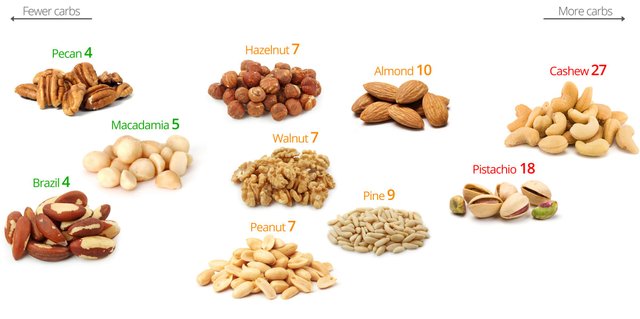
Ketogenic Exceptions
Nuts are staples of the Ketogenic Diet—but they generally have lots of omega-6 and relatively little omega-3 fatty acids. Take, for example, the ever-popular pecan nut. Its ω-6 : ω-3 ratio is 22:1, which is much higher than the value of 4:1 quoted earlier. Typically, 100 g of pecan nuts contain about 23 g of omega-6 fatty acids. That quite a lot. But pecans are not the worst offenders. Dry roasted almonds have a ratio of 2011 : 1.
And there may also be issues with keto-friendly oils. Avocado oil is heavily promoted among the Keto community as one of the healthier choices, but its ω-6 : ω-3 ratio is 13 : 1, and as much as 13% of it is comprised of polyunsaturated fatty acids. Curiously, however, few popular proponents of the Ketogenic Diet ever mention the possible inflammatory effects of nuts “healthy” oils. So, what’s going on here?
Former elite endurance athlete Mark Sissons has this to say on the subject:
... quite a few nuts are fairly O6-intensive (with several, like macadamia nuts, being extremely low). A diet high in these nuts, then, would presumably skew the vaunted tissue O6-O3 ratio toward pro-inflammatory bodily processes …
For one, nuts aren’t just “bags of linoleic acid” ... a nut is a pretty complete nutritional source ... fats, carbohydrates, even protein, plus natural antioxidants like Vitamin E and plenty of minerals ... if we eat the whole nut, the fat remains protected by the natural antioxidants ...
Even if the Omega-6 fat in nuts is bad, the positives of the nut seem to weigh more heavily. Whole nut intake seems to reduce markers of systemic inflammation. (Mark Sisson, Nuts and Omega-6s)
So nuts are generally fine if you are on the Ketogenic Diet—just don’t go nuts!
Oils made from these nuts are best avoided, as they contain concentrated amounts of the omega-6 fatty acids with relatively little of the more healthy anti-inflammatory components. But you don’t have to avoid nut oils entirely. They may be used sparingly as flavour enhancers.
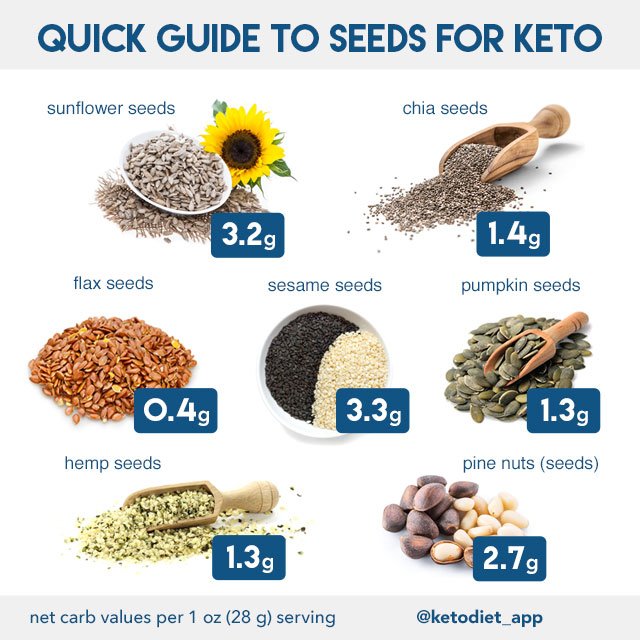
So there’s much to learn.
References
- Jeff S Volek, Stephen D Phinney, The Art and Science of Low Carbohydrate Living, Beyond Obesity LLC (2011)
- Jeff S Volek, Stephen D Phinney, The Art and Science of Low Carbohydrate Performance_, Beyond Obesity LLC (2012)
- Jacob Wilson, Ryan P Lowery, The Ketogenic Bible: The Authoritative Guide to Ketosis, Victory Belt Publishing, Las Vegas (2017)
Image Credits
- Some Healthy Ketogenic Fats: © 2019 DietDoctor, Fair Use
- Butyric Acid: Wikimedia Commons, Public Domain
- Paullinic Acid: Wikimedia Commons, Public Domain
- Linoleic Acid: Wikimedia Commons, Public Domain
- Keto-Friendly Nuts: © 2019 DietDoctor, Fair Use
- Keto-Friendly Seeds: © Copyright 2012 - 2019 Compumaster Ltd, Fair Use
